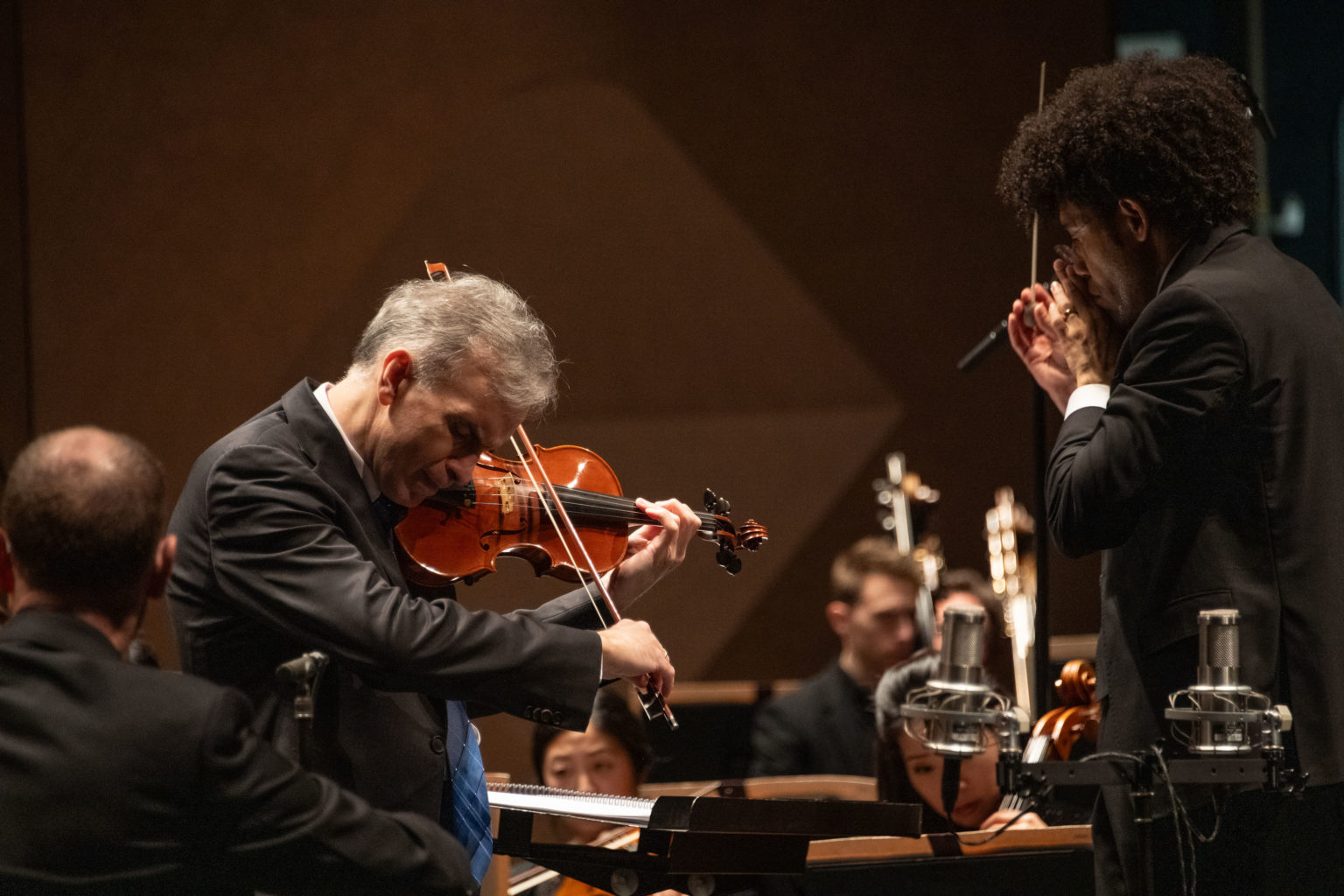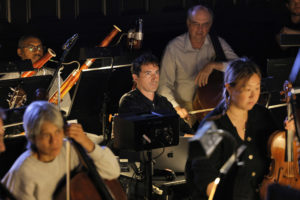Gil Shaham and San Diego Symphony Give the West Coast Premiere of Mason Bates’ ‘Nomad Concerto’ for Violin and Orchestra
Sunday’s San Diego Symphony concert at the San Diego Civic Theatre celebrated a reunion of long-standing friends of the San Diego Symphony. Under the baton of Music Director Rafael Payare, acclaimed violinist Gil Shaham gave the West Coast premiere of Mason Bates’ Nomad Concerto for Violin and Orchestra, a work written for Shaham for which the San Diego Symphony was a co-commissioner.
Payare has chosen works by Bates for important occasions: in October of 2019 for his inaugural concert as San Diego’s Music Director, he led Bates’ Alternative Energy; for the orchestra’s first concert in the newly completed Rady Shell at Jacobs Park, Payare performed Bates’ Soundcheck in C Major. The year before Payare became Music Director, Principal Guest Conductor Edo de Waart led the orchestra in a performance of Bates’ Garages of the Valley.Shaham had been a favorite soloist for both the San Diego Symphony and the La Jolla Music Society over the years. With the orchestra, I recall his stellar Mendelssohn Violin Concerto under Jahja Ling in 2016 and his revelatory premiere of David Bruce’s Violin Concerto Fragile Light in 2014.
From the era of the Nicolò Paganini Violin Concertos, this genre has been equated with virtuoso display, works so difficult that only the most technically advanced violinists could perform them. But from Bates’ program notes and his onstage introductory comments about his Nomad Concerto, it is clear that his goal was not virtuosity for its own sake, but more like Mussorgsky’s Pictures at an Exhibition: the depiction of certain scenes selected by the composer.
In the Nomad Concerto‘s opening movement, “Song of the Balloon Man,” the soloist offers a slow, simple melody accompanied by upper strings and the celesta, like a theme that an itinerant street musician might play hoping to attract an audience. After some low rumbles from the woodwinds, Shaham was able to spin the dross of this timid theme into the gold of fanciful variations that the orchestra picked up with animated glee. After some tongue-in-cheek diaphanous dialogue between the first violins and Shaham, he plucked a few delicate chords with his left hand and bowed a pianissimo farewell.
“Magician at the Bazaar,” an effervescent short movement that functions like a traditional scherzo, asks Shaham to execute a catalogue of fancy flourishes cast in minor modes that suggest an Oriental flavor. In the third movement, “Desert Vision: Oasis,” that exotic color became more intense as Shaham unfolded a mesmerizing line based on the traditional Jewish folk tune “Ani Ma’amin” over a delicate chaconne from the piano and celesta. This movement also offered an engaging trio of the soloist, deft motifs from the percussion section, and a sinuous theme from the horns. “Le jazz manouche,” the finale, unleashed more of the orchestra’s sonic muscle in this unusually understated concerto, offering propulsive, syncopated rhythms and burnished harmonies that evoke the panache of American jazz orchestras in the 1930s. Shaham ran the movement’s syncopated main theme through its paces, offered a short, clever cadenza, and took a bow to rapturous applause.The unfailing warmth of Shaham’s sound and the elegance of his phrasing enriched the adventure of Bates’ new work, and Payare’s direction meticulously revealed its strengths as well as its many subtleties.
The other major work on Sunday’s program, Ottorino Respighi’s Pines of Rome, showed the orchestra’s prowess in creating the Italian composer’s vivid sonic tapestries of his beloved Rome while offering ample opportunities to savor alluring solos from first-chair players in various sections of the orchestra. When Respighi composed Pines of Rome in 1924, tone poems were out of step with both the avant-garde atonalists who followed Schoenberg and the Neo-classicists who followed Stravinsky, but audiences have remained loyal to Respighi’s lush travelogues for a century.
Kudos to Principal Trumpet Christopher Smith and his section for giving the opening movement, “Pines of the Villa Borghese,” its brilliant character, and to Principal Flute Rose Lombardo ad Principal Clarinet Sheryl Renk for their haunting solos that launched the mysterious second movement, “Pines Near a Catacomb.” The lovely nocturne “The Pines of the Janiculum” was graced with a limpid solo by Principal Cello Yao Zhao, and the finale, “The Pines of the Appian Way” was crowned with a majestic antiphonal brass choir placed at the edge of the highest rear balcony of Civic Theatre.
Parallel to last week’s San Diego Symphony concert, Payare programmed two more short Ravel works: an affectionately shaped account of La valse and a rhythmically immaculate performance of Bolero.
This concert was presented by the San Diego Symphony at the San Diego Civic Theatre on Sunday, February 25, 2024.

Ken Herman, a classically trained pianist and organist, has covered music for the San Diego Union, the Los Angeles Times’ San Diego Edition, and for sandiego.com. He has won numerous awards, including first place for Live Performance and Opera Reviews in the 2017, the 2018, and the 2019 Excellence in Journalism Awards competition held by the San Diego Press Club. A Chicago native, he came to San Diego to pursue a graduate degree and stayed.Read more…


